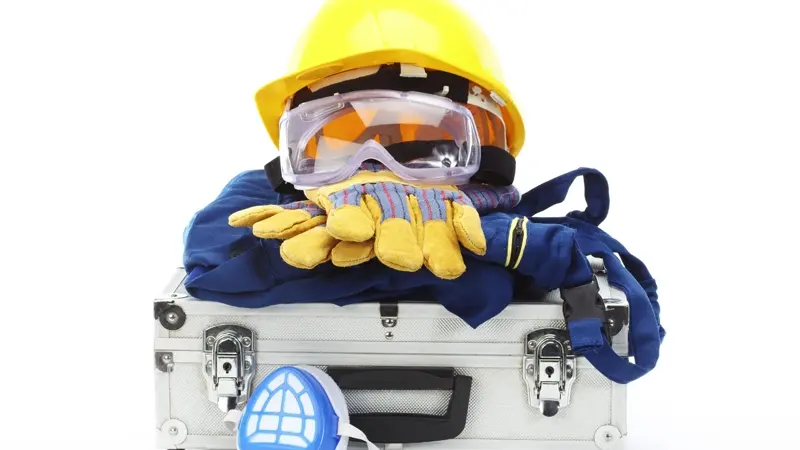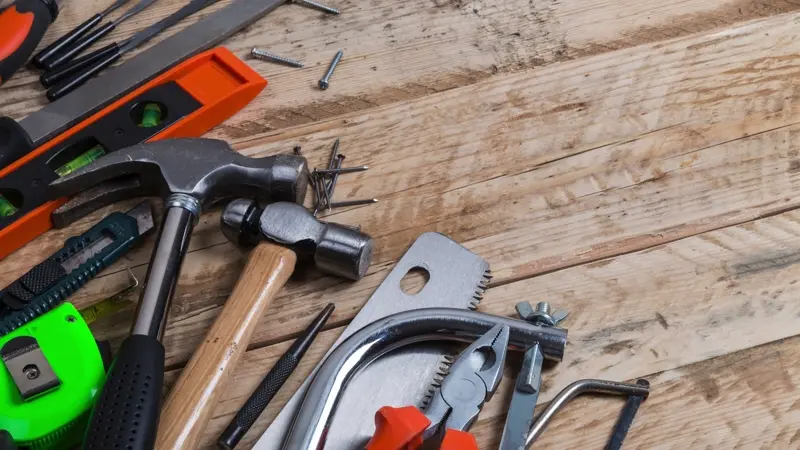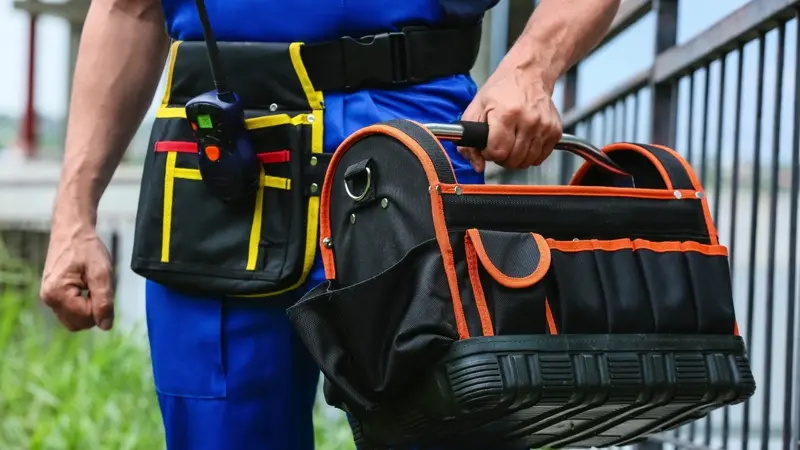In all sectors of work, prioritizing personal safety is crucial. A safe workspace not only guarantees employee health but also boosts productivity by creating a space where the fear of injury doesn’t distract from the task at hand. In various fields, certain personal safety tools prove indispensable in preventing workplace hazards. We will examine some frequently used personal safety equipment vital for a multitude of industries, ranging from construction sites to corporate offices.
Table of Contents
Understanding Personal Protective Equipment (PPE)
Personal protective equipment (PPE) is crucial, especially where workers face significant risks like on construction sites, in labs, and in hospitals. Sometimes, these hazards can’t be fully removed through design changes or work policies. So, PPE becomes an essential shield to prevent injuries from mechanical forces, chemical exposure, infections, and other threats that may harm an individual’s health. For PPE to be truly effective at reducing health and safety risks, it is critical that the right gear is selected, used properly, and kept in good condition. This underlines its vital role in upholding rigorous safety procedures across different sectors.
Head Protection: Hard Hats and Safety Helmets
Hard hats are essential safety equipment in industries like construction and manufacturing, where workers face the risk of injuries from falling debris, tools, or materials, as well as from bumping into stationary objects. These helmets are not only crucial for shielding the head from direct impacts that may cause severe injuries but also offer insulation against electrical hazards. A top-grade hard hat is an important piece of safety gear, carefully designed to meet strict safety regulations and provide employees with the assurance that their safety is prioritized amidst the daily dangers of their jobs.
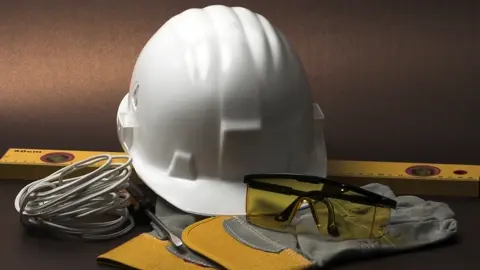
Eye and Face Protection: Safety Glasses and Shields
The importance of protecting one’s eyes and face in hazardous environments is crucial and should always be emphasized. In the wide-ranging field of occupational safety, workers face dangers that vary from handling explosive chemicals in labs for scientific research to the everyday threats like wood chips and sawdust in carpentry. Safety spectacles or goggles are essential in these settings as they serve as a vital shield for the eyes, safeguarding against injury. These protective devices are designed to endure forceful impacts, repel harmful chemicals, and provide uninterrupted clarity to keep workers productive and safe.
In situations where threats extend beyond the eye area, full-face shields are necessary. They cover the whole face and offer broader protection, defending against more widespread hazards like chemical splashes that can damage both the eyes and skin.
Hand Protection: Gloves for Every Task
In industries where workers are regularly exposed to chemicals, such as cleaning services and research labs, it’s essential for staff to use gloves that are resistant to these substances. This is crucial to protect against skin burns, the absorption of toxins, and other types of injuries. Gloves designed to resist chemicals form a strong defense against various harmful agents like solvents and acids.
Conversely, in the metal fabrication sector, where employees frequently handle sharp materials and tools, it is necessary to wear gloves that can resist cuts. Such cut-resistant gloves are made from materials that prevent slashes and punctures, protecting workers’ hands from injuries like cuts and lacerations that can happen while working with metal items and machinery.
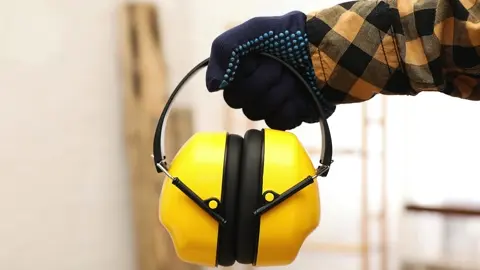
Hearing Protection: Earplugs and Earmuffs
Workers in manufacturing, construction, and aviation frequently face high noise levels that can harm their hearing over time. To protect their hearing, it’s crucial for these workers to wear protective gear like earplugs and earmuffs. Far from being simple accessories, these are vital pieces of safety equipment designed to lessen the impact of dangerous noise. Earplugs are made to fit inside the ear canal, providing a tight seal that blocks noise where it enters the ear. Earmuffs cover the ears completely, muffling surrounding noise with sound-absorbing materials. With proper use of these hearing protectors, workers can significantly reduce noise exposure and safeguard their hearing against potential long-term damage.
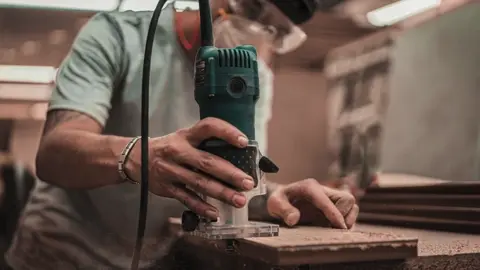
Respiratory Protection: Masks and Respirators
In many workplaces, using respiratory protection is a critical requirement to protect the health and safety of employees. Especially in areas with poor ventilation, the presence of fine particulates, harmful gases, or dangerous dust can pose significant risks. Therefore, a variety of protective gear is crucial. For less severe exposure, disposable masks can act as a basic shield against simple airborne pollutants – an easy solution for temporary situations or when the danger level is low. However, in cases where there’s a need for strong protection due to heavy or long-term exposure, more sophisticated equipment such as full-face respirators is necessary.
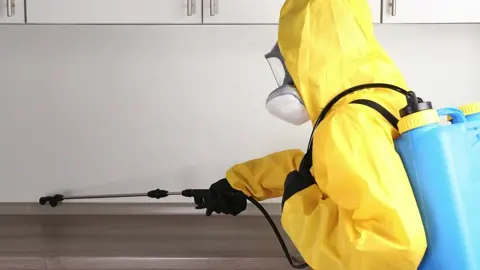
These provide complete facial coverage and are engineered to filter out hazardous particles and toxic fumes thoroughly. Typically equipped with interchangeable filter cartridges or canisters that are tailored to filter specific airborne dangers, these respirators ensure clean breathing air even in the most challenging conditions. It’s essential to choose and use these respiratory protection devices properly because they are not optional extras but rather crucial elements of personal protective equipment protocols designed to reduce health hazards from poor air quality in the workplace.
High-Visibility Clothing: Stay Seen to Stay Safe
In sectors where safety is paramount—like those involving work near fast-moving traffic or heavy equipment—the critical role of high-visibility clothing is clear. These items, often vests and jackets, are crafted from reflective materials in bright colors that ensure the wearer is highly visible, contrasting sharply with environments such as the gray of building sites or the green of roadside areas. This visibility is vital for worker safety; it catches the attention of drivers and equipment operators early, allowing for quicker response times and reducing accident risks.
High-visibility clothing serves a dual purpose: it is a protective measure that enhances visibility under all lighting conditions, and it serves as a continual reminder of the non-negotiable priority of safety on job sites.
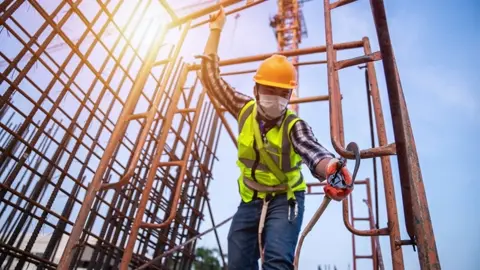
Harnesses and Fall Protection Systems
For high-risk jobs like roofing and window washing, where working at great heights is common, the use of carefully crafted safety harnesses and fall protection systems is essential. These systems are specifically designed to keep workers safe when working in dangerous conditions where any slip could lead to severe injuries or death. The harnesses work by connecting the worker to a solid anchor point or safety net, spreading the force of a fall across sturdier parts of the body to reduce injury.
Adhering to stringent occupational health and safety regulations, which mandate such equipment, is not only about individual safety but also about legal compliance. With these protective measures in place, workers can concentrate on their duties with much less risk of accidents, promoting both their personal safety and workplace efficiency.
Building A Culture of Safety with Personal Safety Tools
Creating a safety-centric culture within an organization extends beyond just handing out personal protective equipment. It involves cultivating a setting where all team members are actively dedicated to maintaining safety in every aspect of their work. Simply supplying the tools is not enough; it’s imperative that every worker not only understands the significance of these instruments but also knows how to utilize them effectively. Extensive training programs are essential to embed safe operating procedures, focusing on proper tool use and the early detection and handling of potential maintenance issues.
This training equips employees with crucial knowledge to avert accidents before they occur. Moreover, it’s important to have an ongoing process of surveillance and evaluation that swiftly identifies and mitigates potential hazards. With a vigilant and forward-thinking strategy, a strong safety culture can become ingrained in the company’s fabric, reducing accidents, boosting productivity, and enhancing morale as workers feel both protected and appreciated in their jobs.
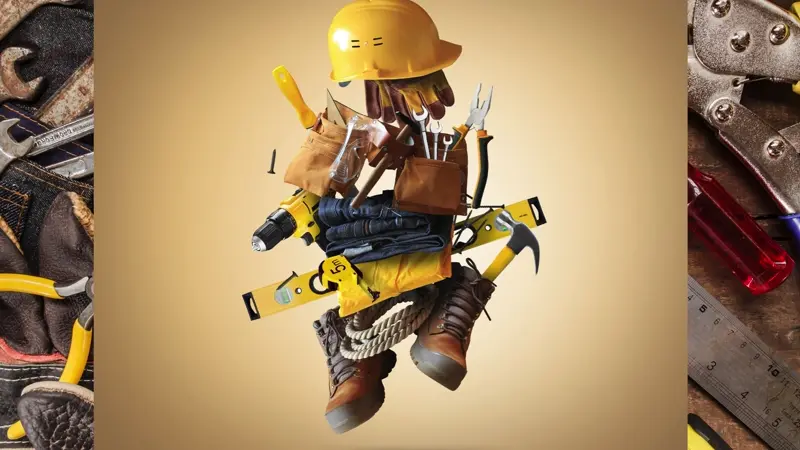
The Bottom Line
Personal safety equipment should be viewed as essential, not just as optional add-ons. These tools play a vital role in protecting employee health across all professions. It’s crucial for companies to understand that these tools are important not only for legal reasons but also to build a reputation as a safety-conscious employer. Staying updated with the latest in personal safety can help create increasingly secure work environments for everyone, irrespective of the sector. By seamlessly integrating personal safety equipment into everyday work routines, businesses can significantly reduce hazards and enhance the well-being of their staff.
